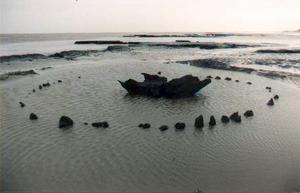The story of Seahenge has turned full circle, as the ancient timbers are returned to Norfolk. But as experts prepare them to go on display at King's Lynn Museum, CHRIS BISHOP finds an enigma that remains unsolved.
Nearly 10 years after its controversial excavation, the mystery remains. While the upturned oak tree and its ring of timbers have taught us a few things we didn't know about our ancestors, we still don't know why they built it.

|
| ©Andy Burnham
|

Comment: Read Political ponerology to understand Hysteroidal cycle and Pathocracy of Human world.